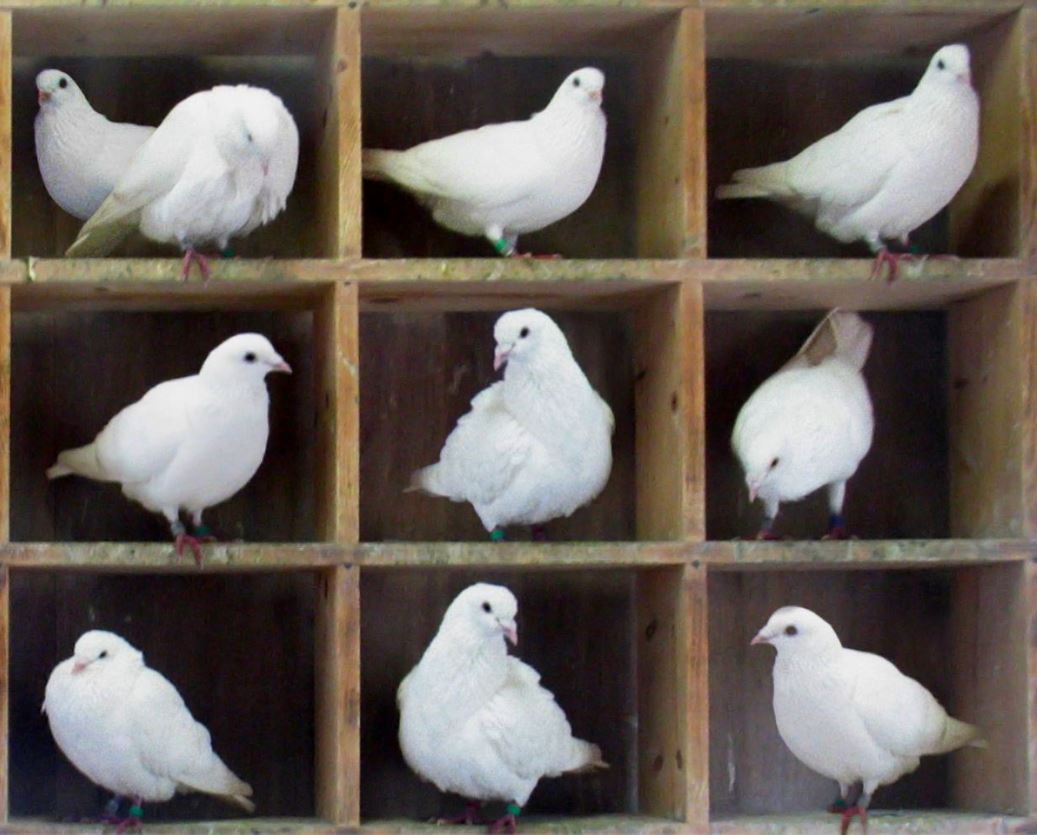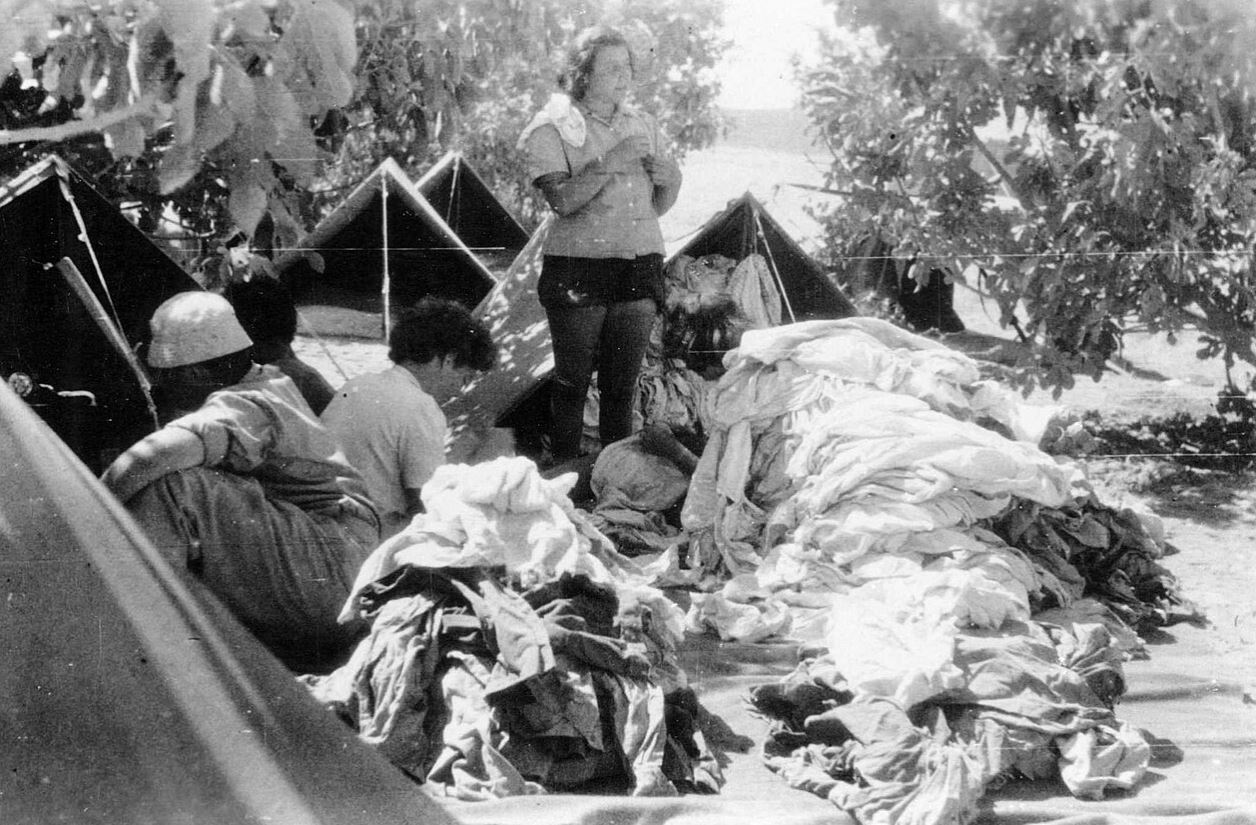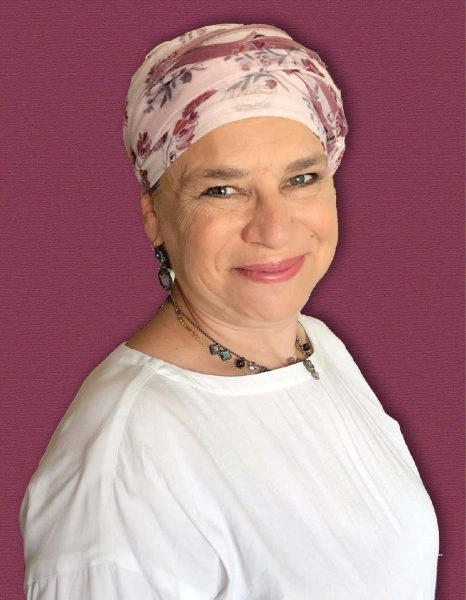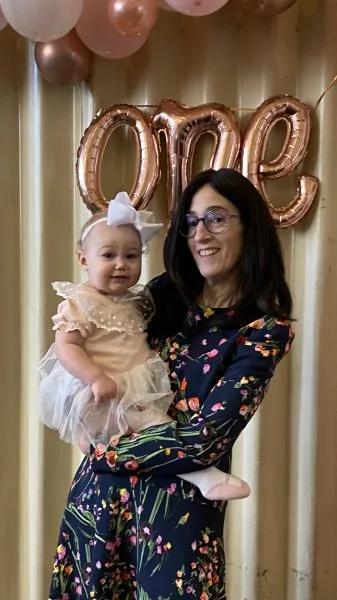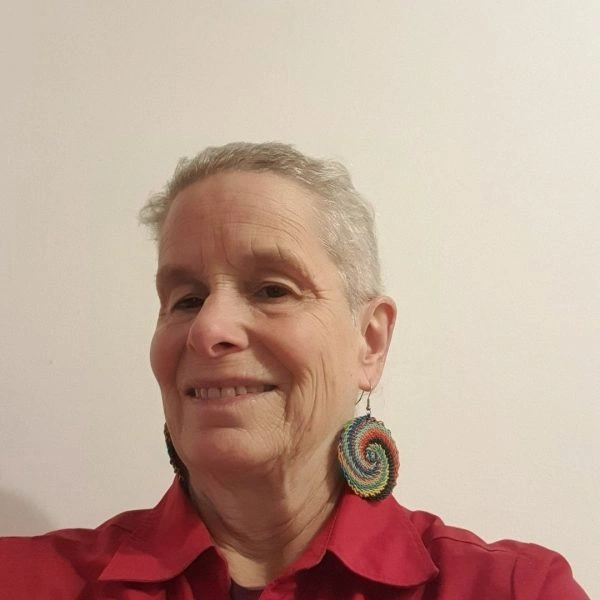A third interpretation of the mishna quoted previously is brought – that it was not Rabbi Yossi’s opinion but Rabbi Yosi the Galilean who held the altar was in the north and a source is brought from which it can be derived that Rabbi Yosi the Galilean, in fact, holds that position. Rav and Rabbi Yochanan have a debate regarding the status of sanctified animals that were designated and then the altar becomes broken. From there the gemara tangents to a debate between Rrabbi Yehuda and Rabbi Yosi regarding the size of the altar in the time of Moshe.
Masechet Zevachim
Masechet Zevachim is sponsored by Esther Kremer in loving memory of her father, Manny Gross on his third yahrzeit. “He exemplified a path of holiness and purity, living with kedushah in his everyday life.”
This month’s learning is sponsored by Beth Balkany in honor of their granddaughter, Devorah Chana Serach Eichel. “May she grow up to be a lifelong learner.”
This month’s learning is dedicated in memory of Rabbi Dr. Raymond Harari z”l, on his 1st yahrzeit. As an educator, principal of Yeshiva of Flatbush, and community rabbi, he inspired thousands with his wisdom, warmth, and unwavering commitment to Torah.
This week’s learning is sponsored by Ruth and David Kahan in honor of Dr. Jody Dushay and Prof. Paul Gompers. “In gratitude for the ongoing and incredibly gracious hospitality!”
Want to dedicate learning? Get started here:

Masechet Zevachim
Masechet Zevachim is sponsored by Esther Kremer in loving memory of her father, Manny Gross on his third yahrzeit. “He exemplified a path of holiness and purity, living with kedushah in his everyday life.”
This month’s learning is sponsored by Beth Balkany in honor of their granddaughter, Devorah Chana Serach Eichel. “May she grow up to be a lifelong learner.”
This month’s learning is dedicated in memory of Rabbi Dr. Raymond Harari z”l, on his 1st yahrzeit. As an educator, principal of Yeshiva of Flatbush, and community rabbi, he inspired thousands with his wisdom, warmth, and unwavering commitment to Torah.
This week’s learning is sponsored by Ruth and David Kahan in honor of Dr. Jody Dushay and Prof. Paul Gompers. “In gratitude for the ongoing and incredibly gracious hospitality!”
Delve Deeper
Broaden your understanding of the topics on this daf with classes and podcasts from top women Talmud scholars.
New to Talmud?
Check out our resources designed to help you navigate a page of Talmud – and study at the pace, level and style that fits you.
The Hadran Women’s Tapestry
Meet the diverse women learning Gemara at Hadran and hear their stories.
Zevachim 59
מִזְבַּח הָעוֹלָה וְגוֹ׳״ – מִזְבֵּחַ בְּפֶתַח אֹהֶל מוֹעֵד, וְלֹא כִּיּוֹר בְּפֶתַח אֹהֶל מוֹעֵד. הֵיכָן הָיָה נוֹתְנוֹ? בֵּין הָאוּלָם וְלַמִּזְבֵּחַ, מָשׁוּךְ קִימְעָא כְּלַפֵּי הַדָּרוֹם.
the altar of the burnt offering he set at the entrance to the Tabernacle of the Tent of Meeting.” (Exodus 40:29), indicating that no object was allowed to be located between the altar and the Tent of Meeting, whose parallel, in the Temple, was the Sanctuary. Rabbi Yosei HaGelili derives from these verses that only the altar stood at the entrance to the Tent of Meeting, but the Basin did not stand at the entrance to the Tent of Meeting. Where would they place the Basin? It was placed between the Entrance Hall and the altar, extended slightly toward the south. Therefore, although the Basin was closer to the Sanctuary than the altar was, it did not actually stand between the altar and the Sanctuary.
מַאי קָסָבַר? אִי קָסָבַר כּוּלֵּיהּ מִזְבֵּחַ בְּדָרוֹם קָאֵי – נוֹקְמֵיהּ מִכּוֹתֶל הֵיכָל וְלַדָּרוֹם, בֵּין אוּלָם לַמִּזְבֵּחַ!
The Gemara seeks to clarify: What does Rabbi Yosei HaGelili hold? If he holds that the entire altar stands in the south section of the Temple courtyard, let him stand the Basin anywhere from where the wall of the Sanctuary begins and southward, so that it is not opposite the entrance to the Sanctuary but it is between the Entrance Hall and the altar. This would allow for the optimal fulfillment of both verses (Exodus 40:29; Leviticus 4:7), as the Basin would be located between the altar and the Sanctuary without interposing between the altar and the entrance to the Sanctuary.
וְאִי נָמֵי קָסָבַר קְדוּשַּׁת הֵיכָל וְאוּלָם חֲדָא הִיא – נוֹקְמֵיהּ מִכּוֹתֶל אוּלָם וְלַדָּרוֹם, בְּבֵין אוּלָם לַמִּזְבֵּחַ!
The Gemara continues: And even if he holds that the level of sanctity of the Sanctuary and the Entrance Hall is the same, in which case the Basin could not be located opposite the entrance to the Entrance Hall as this too would be considered a violation of the second verse, let him stand the Basin anywhere from where the wall of the Entrance Hall begins and southward, so that it is not opposite the entrance to the Entrance Hall but is in between the Entrance Hall and the altar. From the fact that Rabbi Yosei HaGelili did not say that, it is clear he held that the altar was not located in the southern section of the Temple courtyard.
אִי נָמֵי קָסָבַר חֶצְיוֹ בַּצָּפוֹן וְחֶצְיוֹ בַּדָּרוֹם – נוֹקְמֵיהּ מִכּוֹתֶל הֵיכָל וְלַדָּרוֹם, בֵּין אוּלָם וְלַמִּזְבֵּחַ!
Alternatively, if Rabbi Yosei HaGelili holds that half of the altar was located in the north section of the Temple courtyard and half of it was located in the south, let him stand the Basin anywhere from where the wall of the Sanctuary begins and southward, so that it is not opposite the entrance to the Sanctuary but between the Entrance Hall and the altar. Since the entrance to the Sanctuary was five cubits wide and stood in the middle of the courtyard, and the altar was thirty-two cubits long, there would have been eleven cubits to both the north and the south of the entrance to the Sanctuary where the Basin could be placed in order to be located between the altar and the Sanctuary without interposing between the altar and the entrance to the Sanctuary.
וְאִי נָמֵי קָסָבַר קְדוּשַּׁת הָאוּלָם וְהֵיכָל חֲדָא הִיא – נוֹקְמֵיהּ מִכּוֹתֶל אוּלָם וְלַדָּרוֹם, בֵּין אוּלָם וְלַמִּזְבֵּחַ! אֶלָּא לָאו מִשּׁוּם דְּקָסָבַר כּוּלֵּיהּ מִזְבֵּחַ בַּצָּפוֹן?
And even if Rabbi Yosei HaGelili holds that the level of sanctity of the Entrance Hall and that of the Sanctuary is the same, in which case the Basin could not be located opposite the entrance to the Entrance Hall because this too would be considered a violation of the second verse, let him stand the Basin anywhere from where the wall of the Entrance Hall begins and southward, so that it is not opposite the entrance to the Entrance Hall but in between the Entrance Hall and the altar. Why does Rabbi Yosei HaGelili require that the Basin be placed south of the altar? The Gemara concludes: Rather, is it not due to the fact that Rabbi Yosei HaGelili holds that the entire altar stood in the north section of the Temple courtyard?
כִּי נָמֵי מוֹקְמַתְּ לַהּ מִכּוֹתֶל הֵיכָל וְלַצָּפוֹן – הָוֵה לֵיהּ בֵּין אוּלָם וְלַמִּזְבֵּחַ;
The Gemara asks: Even if this is the case, why does Rabbi Yosei HaGelili require that the Basin be located to the south of the altar so that it is not actually in between the altar and the Sanctuary? Even if you stand it anywhere from where the wall of the Sanctuary begins and northward, it would not interpose between the altar and the entrance to the Sanctuary but it would actually be located in between the Entrance Hall and the altar.
וְנוֹקְמַהּ מִכּוֹתֶל אוּלָם וְלַצָּפוֹן, בְּבֵין אוּלָם וְלַמִּזְבֵּחַ!
And even if Rabbi Yosei HaGelili holds that the sanctity of the Entrance Hall is equal to that of the Sanctuary, and that the Basin cannot interpose between the altar and the entrance to the Entrance Hall, stand the Basin anywhere from where the wall of the Entrance Hall begins and northward, so that it is not opposite the entrance to the Entrance Hall but it is located in between the Entrance Hall and the altar.
אָמַר קְרָא: ״צָפוֹנָה״ – שֶׁיְּהֵא צָפוֹן פָּנוּי מִכֵּלִים.
The Gemara answers: That suggestion is technically not feasible, as the verse states: “And he shall slaughter it on the side of the altar northward [tzafona]” (Leviticus 1:11). This verse indicates that the north section of the Temple courtyard must be vacant of all vessels, including the Basin. This concludes the Gemara’s explanation of Rav Sherevya’s assertion that the mishna in Tamid, which holds that the altar was located in the northern part of the Temple courtyard, is in accordance with the opinion of Rabbi Yosei HaGelili.
מַאן תַּנָּא דִּפְלִיג עֲלֵיהּ דְּרַבִּי יוֹסֵי הַגְּלִילִי? רַבִּי אֱלִיעֶזֶר בֶּן יַעֲקֹב הִיא. דְּתַנְיָא, רַבִּי אֱלִיעֶזֶר בֶּן יַעֲקֹב אוֹמֵר: ״צָפוֹנָה״ – שֶׁיְּהֵא צָפוֹן פָּנוּי מִכְּלוּם, וַאֲפִילּוּ מִן הַמִּזְבֵּחַ.
The Gemara asks: Who is the tanna who disagrees with Rabbi Yosei HaGelili? The Gemara answers: It is Rabbi Eliezer ben Yaakov, as it is taught in a baraita that Rabbi Eliezer ben Yaakov says: The verse states: “Northward before the Lord” (Leviticus 1:11). This indicates that the north section of the Temple courtyard must be vacant of everything, and even of the altar. Therefore, he maintains that the entire altar stood in the southern section of the Temple courtyard.
אָמַר רַב: מִזְבֵּחַ שֶׁנִּפְגַּם – כׇּל הַקֳּדָשִׁים שֶׁנִּשְׁחֲטוּ שָׁם פְּסוּלִין. מִקְרָא הוּא בְּיָדֵינוּ, וּשְׁכַחְנוּהוּ. כִּי סְלֵיק רַב כָּהֲנָא, אַשְׁכְּחֵיהּ לְרַבִּי שִׁמְעוֹן בְּרַבִּי דְּקָאָמַר מִשּׁוּם רַבִּי יִשְׁמָעֵאל בְּרַבִּי יוֹסֵי: מִנַּיִן לַמִּזְבֵּחַ שֶׁנִּפְגַּם – שֶׁכׇּל הַקֳּדָשִׁים שֶׁנִּשְׁחֲטוּ שָׁם פְּסוּלִין?
§ Rav says: In a case of an altar that was damaged, all sacrificial animals that were slaughtered there are disqualified. Rav continues: We have a verse as the source for this halakha but we have forgotten which one it is. When Rav Kahana, Rav’s disciple, ascended from Babylonia to Eretz Yisrael, he found Rabbi Shimon, son of Rabbi Yehuda HaNasi, saying in the name of Rabbi Yishmael, son of Rabbi Yosei: From where is it derived that in the case of an altar that was damaged, that all sacrificial animals that were slaughtered there are disqualified?
שֶׁנֶּאֱמַר: ״וְזָבַחְתָּ עָלָיו אֶת עֹלֹתֶיךָ וְאֶת שְׁלָמֶיךָ״ – וְכִי עָלָיו אַתָּה זוֹבֵחַ?! אֶלָּא כְּשֶׁהוּא שָׁלֵם, וְלֹא כְּשֶׁהוּא חָסֵר. אָמַר: הַיְינוּ קְרָא דְּאִישְׁתְּמִיט לֵיהּ לְרַב.
It is derived from a verse, as it is stated in the verse with regard to the altar: “An altar of earth you shall make for Me, and you shall slaughter upon it your burnt offerings and your peace offerings [shelamekha]” (Exodus 20:21). Is it true that you slaughter sacrificial animals on the altar itself? They are slaughtered on the ground near the altar. No, rather, the verse indicates that one is able to slaughter the sacrificial animals on account of the altar, i.e., when the altar is complete [shalem], but not when it is lacking, i.e., damaged. Rav Kahana said: This is the verse that eluded Rav.
וְרַבִּי יוֹחָנָן אָמַר: אֶחָד זֶה וְאֶחָד זֶה פְּסוּלִין. בְּמַאי פְּלִיגִי? רַב סָבַר: בַּעֲלֵי חַיִּים אֵינָן נִדְחִים, וְרַבִּי יוֹחָנָן סָבַר: בַּעֲלֵי חַיִּים נִידְחִין.
And Rabbi Yoḥanan says: Both this one and that one are disqualified, i.e., all animals that were designated as offerings when the altar was in a damaged state are disqualified, even if they were not yet slaughtered. The Gemara asks: With regard to what issue do Rav and Rabbi Yoḥanan disagree? The Gemara answers: Rav holds that living animals are not permanently deferred, and Rabbi Yoḥanan holds that living animals are permanently deferred. If the altar is damaged and it is therefore impossible to sacrifice offerings, Rav holds that only offerings that were already slaughtered become permanently deferred, whereas Rabbi Yoḥanan holds that even those that were not yet slaughtered become permanently deferred.
מֵיתִיבִי: כׇּל הַקֳּדָשִׁים שֶׁהָיוּ עַד שֶׁלֹּא נִבְנָה הַמִּזְבֵּחַ, וְאַחַר כָּךְ נִבְנָה הַמִּזְבֵּחַ – פְּסוּלִין. נִבְנָה?! דְּחוּיִין מֵעִיקָּרָא נִינְהוּ!
The Gemara raises an objection to Rav’s opinion, based on a baraita: In the case of all sacrificial animals that were consecrated before the altar was built, and then the altar was subsequently built, the animals are disqualified. The Gemara assumes that this baraita is referring to animals that were consecrated before the building of the altar in the Second Temple. The Gemara responds: In a case where the animals were consecrated before the altar was built, the animals are considered initially deferred, i.e., deferred from the time they were initially consecrated. In this case all agree they are not permanently deferred and they can be sacrificed when the altar is built.
אֶלָּא עַד שֶׁלֹּא נֶהֱרַס הַמִּזְבֵּחַ. נֶהֱרַס?! הָא אִיזְּקוּן לְהוּ!
Rather, explain the baraita as follows: If the animals were consecrated before the altar was destroyed in the First Temple, and then the altar was destroyed and rebuilt, the animals are still disqualified. The Gemara questions this reading: Can the baraita be referring to a case where the altar was destroyed in the First Temple? Didn’t the animals become too old for sacrifice by the time the altar was constructed in the Second Temple?
אֶלָּא עַד שֶׁלֹּא נִפְגַּם הַמִּזְבֵּחַ, וְאַחַר כָּךְ נִפְגַּם הַמִּזְבֵּחַ – פְּסוּלִין. וְלָא תָּרוֹצֵי קָא מְתָרְצַתְּ? אֵימָא: שֶׁנִּשְׁחֲטוּ.
The Gemara emends the baraita yet again: Rather, the baraita is referring to a case where one consecrated the animals before the altar was damaged, and subsequently the altar was damaged. The halakha is that the animals are disqualified. It seems from this baraita that even sacrificial animals that were not yet slaughtered when the altar became damaged are nevertheless permanently disqualified, in contrast to the opinion of Rav. The Gemara rejects this proof: But did you not already have to emend the text of the baraita? Emend it differently and say that the case is where the animals were slaughtered before the altar became damaged. Accordingly, there is no proof from this baraita with regard to the deferral of living animals.
וְהָאָמַר רַב גִּידֵּל אָמַר רַב: מִזְבֵּחַ שֶׁנֶּעֱקַר – מַקְטִירִין קְטֹרֶת בִּמְקוֹמוֹ!
Rav said that sacrificial animals that were slaughtered in the Temple courtyard when the altar was in a damaged state are disqualified. The Gemara asks: But doesn’t Rav Giddel say that Rav says: In a case where the golden altar became uprooted from its location in the Sanctuary, one may burn the incense in its place? Apparently, it is not essential to have the altar in order to sacrifice offerings.
כִּדְאָמַר רָבָא: מוֹדֶה הָיָה רַבִּי יְהוּדָה בְּדָמִים; הָכָא נָמֵי – מוֹדֶה רַב בְּדָמִים.
The Gemara answers: It is like that which Rava says (60a): Although Rabbi Yehuda maintains that the entire Temple courtyard is fit for burning the sacrificial portions of offerings, Rabbi Yehuda would concede with regard to the presenting of the blood that it must be performed specifically on the altar. Here too, the Gemara says, Rav concedes with regard to the blood that an altar is required. Consequently, if consecrated offerings were slaughtered when the altar was in a damaged state, since the blood may not be presented, the offering is disqualified.
מַאי רַבִּי יְהוּדָה? דְּתַנְיָא: ״בַּיּוֹם הַהוּא קִידַּשׁ הַמֶּלֶךְ תּוֹךְ הֶחָצֵר וְגוֹ׳, כִּי מִזְבֵּחַ (שֶׁעָשָׂה מֹשֶׁה) קָטָן מֵהָכִיל״ – דְּבָרִים כִּכְתָבָן. דִּבְרֵי רַבִּי יְהוּדָה.
Having briefly mentioned Rabbi Yehuda’s opinion, the Gemara asks: What is the context of the statement of Rabbi Yehuda? The Gemara answers: As it is taught in a baraita: The verse states with regard to the inauguration of the Temple in the time of King Solomon: “On that day the king sanctified the middle of the court that was before the House of the Lord; as there he offered the burnt offering, and the meal offering, and the fat of the peace offerings; because the copper altar that was before the Lord was too small to receive the burnt offering, and the meal offering, and the fat of the peace offerings” (I Kings 8:64). The matters in the verse are to be understood as they are written, i.e., that the altar in the Temple was too small to receive all of the offerings that Solomon sacrificed, and Solomon therefore sanctified the Temple courtyard so that it, too, could function as an altar; this is the statement of Rabbi Yehuda.
אָמַר לוֹ רַבִּי יוֹסֵי,
Rabbi Yosei said to him:
וַהֲלֹא כְּבָר נֶאֱמַר: ״אֶלֶף עֹלוֹת יַעֲלֶה שְׁלֹמֹה עַל הַמִּזְבֵּחַ הַהוּא״, וְאִילּוּ בְּבֵית עוֹלָמִים הוּא אוֹמֵר: ״וַיִּזְבַּח שְׁלֹמֹה אֵת זֶבַח הַשְּׁלָמִים אֲשֶׁר זָבַח לַה׳ בָּקָר עֶשְׂרִים וּשְׁנַיִם אֶלֶף״;
But isn’t it already stated with regard to the altar that Moses built: “A thousand burnt offerings did Solomon offer upon that altar” (I Kings 3:4), while with regard to the Eternal House, i.e., the Temple, it states: “And Solomon offered for the sacrifice of peace offerings, which he offered to the Lord, two and twenty thousand cattle and one hundred and twenty thousand sheep” (I Kings 8:63)?
וּכְשֶׁאַתָּה מַגִּיעַ לְחֶשְׁבּוֹן עוֹלוֹת וּלְמִנְיַן אַמּוֹת – זֶה גָּדוֹל מִזֶּה!
And when you arrive at the calculation of burnt offerings and the number of cubits for each altar, this was greater than that, i.e., Solomon sacrificed more offerings per square cubit on Moses’ altar than he did on the altar in the Temple upon its inauguration. Therefore, it is difficult to suggest that the altar in the Temple was not large enough to accommodate the number of offerings that Solomon sacrificed.
אֶלָּא מַהוּ ״קָטָן מֵהָכִיל״, כְּאָדָם הָאוֹמֵר לַחֲבֵירוֹ: ״פְּלוֹנִי נַנָּס הוּא״ – וּפָסוּל לַעֲבוֹדָה.
Rabbi Yosei presents an alternative understanding of the verse: Rather, what is the meaning of the phrase “because the copper altar…was too small to receive”? It is not referring to the altar built by Solo-mon, but rather to the copper altar built in the time of Moses, which was disqualified from use from the day of the Temple’s inauguration on. Rather than stating outright that the altar became disqualified, the verse employed a euphemism, like a person who says to his friend: So-and-so is a dwarf [nanas], and what he really means to say is that he is disqualified from performing the Temple service. Similarly, rather than stating outright that the altar built in the time of Moses became disqualified, the verse states that it was too small to accommodate the offerings sacrificed in the Temple.
וְרַבִּי יְהוּדָה – שַׁפִּיר קָאָמַר רַבִּי יוֹסֵי! רַבִּי יְהוּדָה לְטַעְמֵיהּ, דְּאָמַר: מִזְבֵּחַ שֶׁעָשָׂה מֹשֶׁה – גָּדוֹל הָיָה. דְּתַנְיָא: ״חָמֵשׁ אַמּוֹת אֹרֶךְ וְחָמֵשׁ אַמּוֹת רֹחַב״ – דְּבָרִים כִּכְתָבָן. דִּבְרֵי רַבִּי יוֹסֵי.
The Gemara asks: And how does Rabbi Yehuda respond to this claim? Rabbi Yosei is saying well, i.e., his claim is persuasive. The Gemara explains: Rabbi Yehuda conforms to his standard line of reasoning, as he says that the altar that Moses built was large. As it is taught in a baraita: The verse states that the altar built in the time of Moses was: “Five cubits long and five cubits wide” (Exodus 27:1). The matters in the verse are to be understood as they are written; this is the statement of Rabbi Yosei.
רַבִּי יְהוּדָה אוֹמֵר: נֶאֱמַר כָּאן ״רָבוּעַ״, וְנֶאֱמַר לְהַלָּן ״רָבוּעַ״; מָה לְהַלָּן מֵאֶמְצָעִיתוֹ הָיָה מוֹדֵד, אַף כָּאן מֵאֶמְצָעִיתוֹ הָיָה מוֹדֵד.
Rabbi Yehuda says: It is stated here that the altar built in the time of Moses was: “Square” (Exodus 27:1), and it is stated there, in Ezekiel’s prophetic description of the altar, that it is: “Square” (Ezekiel 43:16). Just as there, in Ezekiel’s vision, he was measuring the distance in each direction from its center, so too here, the verse was measuring the altar that Moses built from its center. Accordingly, the altar built by Moses was ten cubits by ten cubits. As a result, Solomon sacrificed more offerings per square cubit of space on the altar in the Temple than he did on the altar built by Moses. It is therefore possible that the altar in the Temple was not sufficient to accommodate the offerings, and Solomon consecrated the Temple courtyard to serve as an altar.
וְהָתָם מְנָלַן? דִּכְתִיב: ״וְהָאֲרִיאֵל שְׁתֵּים עֶשְׂרֵה אַמָּה לְכׇל רוּחַ״. אוֹ אֵינוֹ אֶלָּא שְׁתֵּים עֶשְׂרֵה עַל שְׁתֵּים עֶשְׂרֵה? כְּשֶׁהוּא אוֹמֵר: ״אַל אַרְבַּעַת רְבָעָיו״ – מְלַמֵּד שֶׁמֵּאֶמְצַע הוּא מוֹדֵד.
The Gemara asks: And from where do we derive that the altar mentioned there, in Ezekiel, was measured from its center? The Gemara answers: As it is written: “And the hearth shall be twelve cubits long by twelve wide, square, to its four sides” (Ezekiel 43:16). The Gemara asks: Does the verse mean twelve cubits in each direction from the center of the altar, so that in total it was twenty-four by twenty-four cubits? Or perhaps the altar was only a total of twelve by twelve cubits. The Gemara answers: When the verse states: “To its four sides,” it teaches that Ezekiel was measuring from the center of the altar.
וְרַבִּי יוֹסֵי, כִּי גְּמִר גְּזֵירָה שָׁוָה – בְּגוֹבְהָהּ הוּא דִּגְמִיר. דְּתַנְיָא: ״וְשָׁלֹשׁ אַמּוֹת קוֹמָתוֹ״ – דְּבָרִים כִּכְתָבָן. דִּבְרֵי רַבִּי יְהוּדָה.
The Gemara asks: And how does Rabbi Yosei respond to Rabbi Yehuda’s claim? The Gemara answers: When he learns the verbal analogy, he learns it with regard to the altar’s height. As it is taught in a baraita: The verse states with regard to the altar built in the time of Moses: “And its height shall be three cubits” (Exodus 27:1). The matters in the verse are to be understood as they are written, i.e., that the height of the altar was three cubits. This is the statement of Rabbi Yehuda.
רַבִּי יוֹסֵי אוֹמֵר: נֶאֱמַר כָּאן ״רָבוּעַ״, וְנֶאֱמַר לְהַלָּן ״רָבוּעַ״; מָה לְהַלָּן – גּוֹבְהוֹ פִּי שְׁנַיִם כְּאׇרְכּוֹ, אַף כָּאן – פִּי שְׁנַיִם כְּאׇרְכּוֹ.
Rabbi Yosei says: It is stated here that the altar built in the time of Moses was: “Square” (Exodus 27:1), and it is stated there that the incense altar was: “Square” (Exodus 30:2). The verbal analogy indicates that just as there, with regard to the incense altar, its height was twice its length, so too here, the height of the altar built in the time of Moses was twice its length, i.e., ten cubits.
אֲמַר לֵיהּ רַבִּי יְהוּדָה, וַהֲלֹא כְּבָר נֶאֱמַר: ״וְאֶת הֶחָצֵר מֵאָה אַמָּה וְקוֹמָה חָמֵשׁ אַמּוֹת וְגוֹ׳״ – אֶפְשָׁר כֹּהֵן עוֹמֵד עַל גַּבֵּי הַמִּזְבֵּחַ וַעֲבוֹדָה בְּיָדוֹ, וְכׇל הָעָם רוֹאִין אוֹתוֹ מִבַּחוּץ?!
Rabbi Yehuda said to Rabbi Yosei: But isn’t it already stated: “The length of the court shall be a hundred cubits…and the height five cubits” (Exodus 27:18)? Is it possible that the priest would stand atop the altar and hold the items with which he would perform the sacrificial service in his hand, and the whole nation could see him from outside the courtyard? That would constitute a lack of respect for the service in the Tabernacle.
אָמַר לוֹ רַבִּי יוֹסֵי, וַהֲלֹא כְּבָר נֶאֱמַר: ״וְאֵת קַלְעֵי הֶחָצֵר וְאֶת מָסַךְ שַׁעַר הֶחָצֵר אֲשֶׁר עַל הַמִּשְׁכָּן וְעַל הַמִּזְבֵּחַ״ – מָה מִשְׁכָּן עֶשֶׂר אַמּוֹת, אַף מִזְבֵּחַ עֶשֶׂר אַמּוֹת; וְאוֹמֵר: ״קְלָעִים חֲמֵשׁ עֶשְׂרֵה
Rabbi Yosei said back to him: But isn’t it already stated: “And the curtains of the court, and the screen for the door of the gate of the court which is by the Tabernacle and by the altar” (Numbers 4:26)? This verse juxtaposes the Tabernacle with the altar to teach that just as the Tabernacle was ten cubits high, so too, the altar was ten cubits high. And another verse states: “The curtains were fifteen






